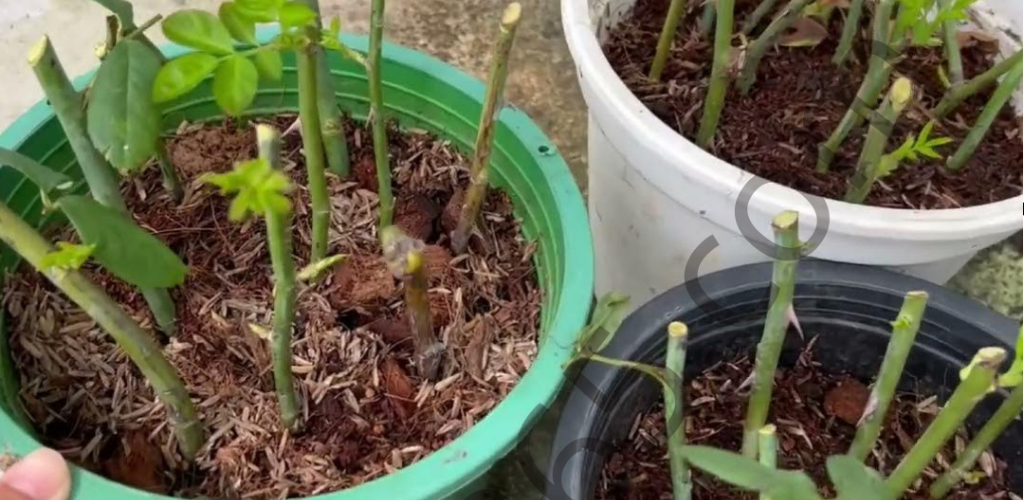3 Ways to Propagate Roses Roses, with their captivating beauty and fragrance, are among the most beloved flowers in the world.
. Stem cuttings Cuttings are one of the most popular methods for propagating roses. Here’s how to do it: Choose healthy stems: Select healthy, vigorous rose stems, preferably those that have recently bloomed. Cut the stems at an angle with clean pruning shears to expose more surface area. Remove leaves: Remove the leaves from the lower part of the stem, leaving a few leaves on top. This will reduce water loss through evaporation and encourage root development. Use Rooting Hormone: Dip the cut end of the stem in rooting hormone to encourage root growth. Plant in a suitable substrate: Plant the stems in a light, well-drained substrate, such as cutting soil. Water lightly and cover the cuttings with a clear plastic bag to create a humid environment. Place them in a shady spot: Place the cuttings in a shady spot to avoid too much direct sunlight. Be sure to keep the soil moist until the cuttings develop roots, which can take a few weeks to a few months. ad 2. Layering Layering is a method where a branch of a rose bush is encouraged to develop roots before being cut and transplanted. Here’s how to do it: Select a flexible branch: Choose a flexible, non-woody branch on the rose bush you wish to propagate. Lightly injure the branch: Make a small incision or gently remove the bark where you want roots to grow. This will encourage root formation in that area. Wrap in substrate: Wrap the injured part of the branch in a moist substrate, such as peat moss or potting soil. Then wrap the whole thing in clear plastic to maintain moisture. Wait for roots to form: Wait for the branch to develop substantial roots, which can take several weeks to a few months depending on the rose variety. Cut and Plant: Once the branch has developed enough roots, cut it from the mother plant and plant it in the ground or in a pot with a well-draining potting mix. 3. Grafting Grafting is a more advanced method of propagating roses and involves joining a variety of rose (the scion) to a hardy, disease-resistant rootstock. Here are the general steps of grafting: Select Plants: Choose a healthy rootstock and a variety of rose you wish to propagate. Make a slanted cut: Cut a piece of the rootstock and make a slanted cut on top. Similarly, make a slanted cut on the scion, creating a perfect match with the rootstock. Join the two parts: Join the two cut parts together so that the cambium (the layer of cells that is responsible for growth) of the scion and the rootstock are in contact. Wrap the graft: Use grafting tape or other similar material to tightly wrap the graft area. This helps hold the two parts together. Keep the graft moist: Once the graft is done, keep the area moist by covering it with a clear plastic bag. Monitor growth: Watch the graft carefully to see if it is taking. Once you see new shoots growing from the scion, it means the graft was successful. Propagating roses can be a rewarding process, but it requires patience and diligence. Whether you choose to take cuttings, layer or graft, be sure to provide your new plants with the proper care to help them thrive in your garden.
